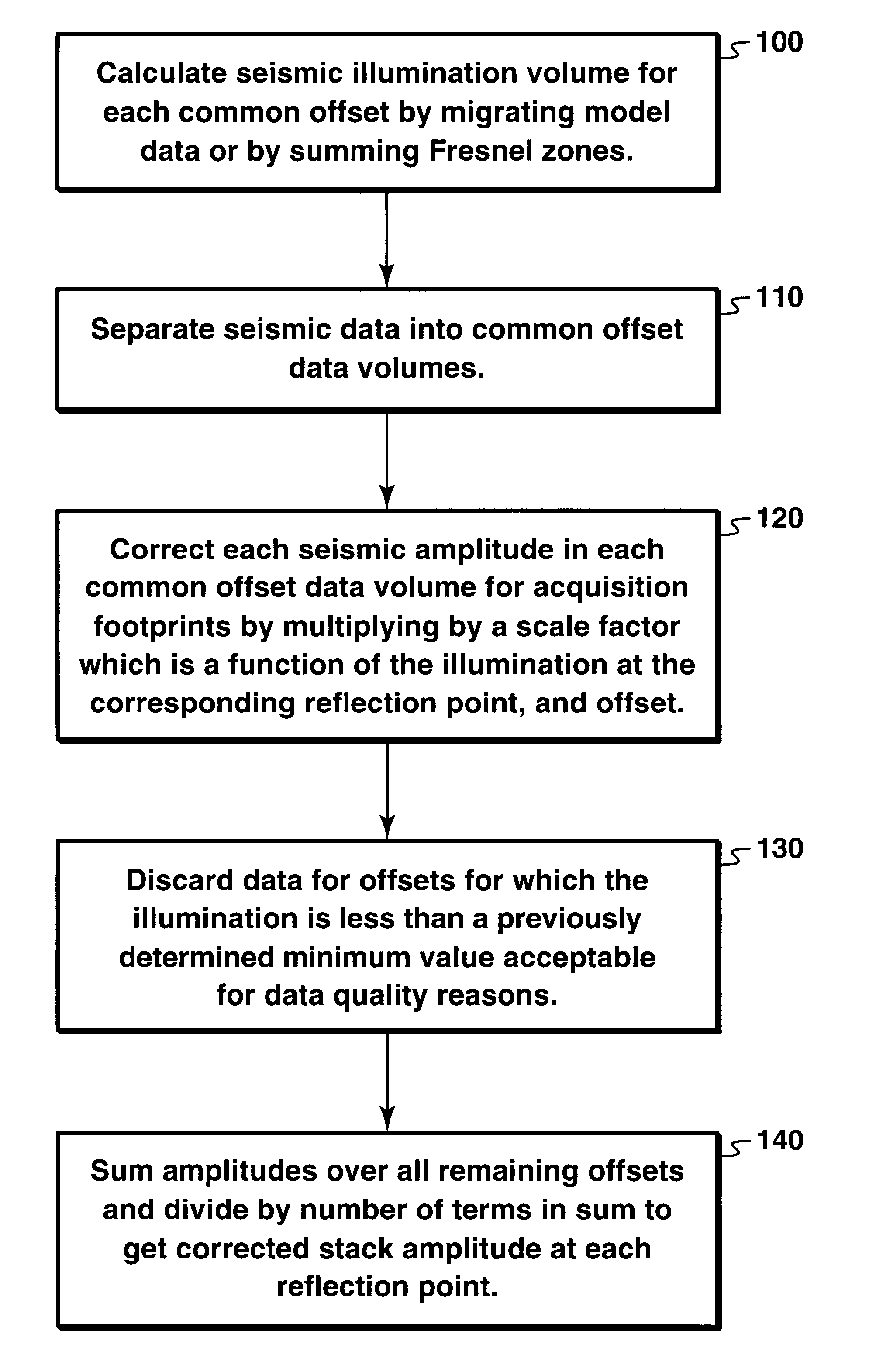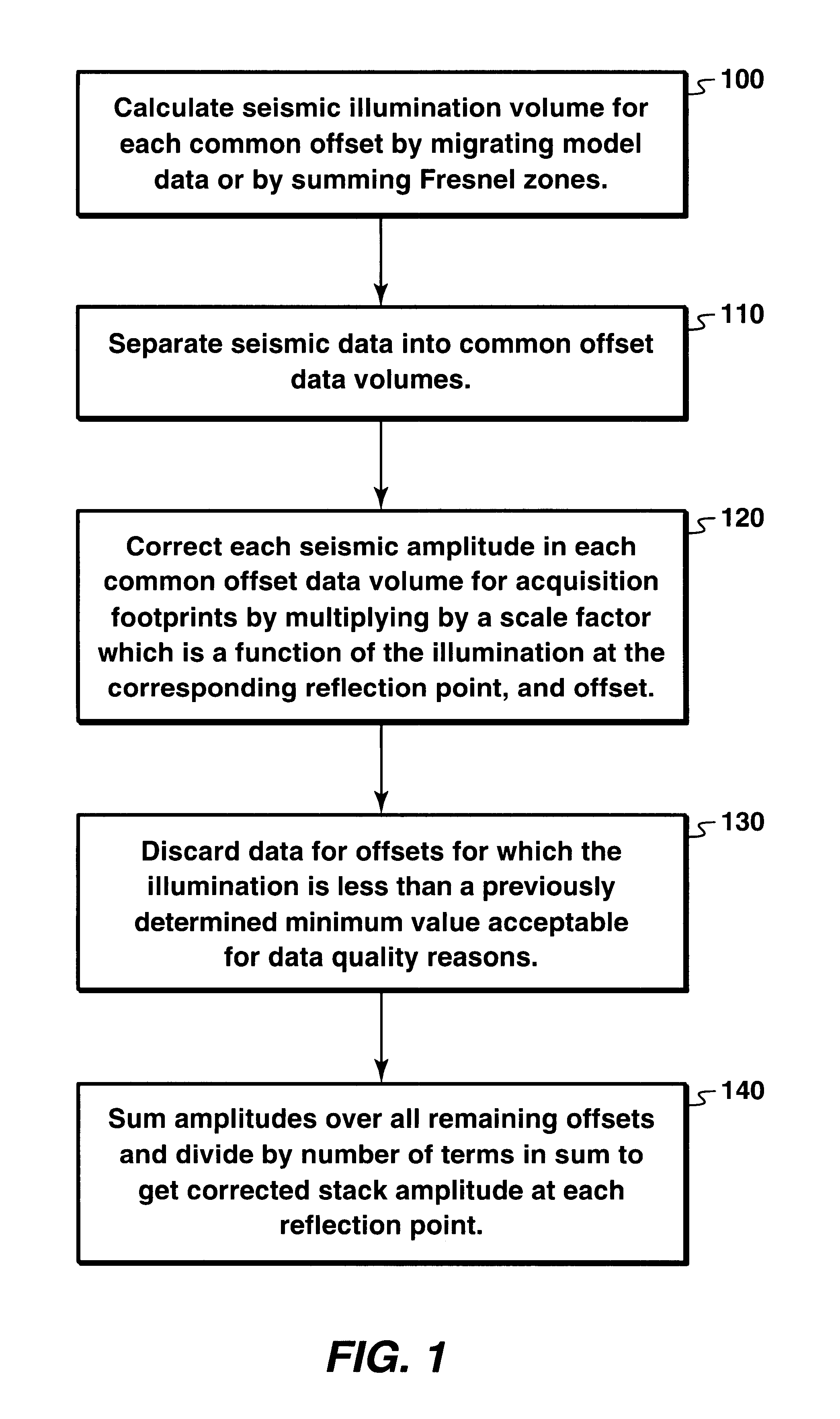Illumination corrections to reduce geometrical artifacts in seismic data
a technology of seismic data and geometric artifacts, applied in the field of three-dimensional (3d) seismic prospecting, can solve problems such as obscuring the true geologic picture, affecting the accuracy of seismic data acquisition, so as to eliminate the discontinuity of the weighting function
- Summary
- Abstract
- Description
- Claims
- Application Information
AI Technical Summary
Problems solved by technology
Method used
Image
Examples
Embodiment Construction
As stated above, reflector illumination is defined to be the imaged amplitude achieved by the given acquisition geometry when the reflection coefficient on the reflector of interest is unity everywhere. This can be computed by constructing and migrating model data, a procedure that will be obvious to anyone skilled in the art of seismic migration. Alternatively, the illumination can be computed (with superior computational efficiency) by summing Fresnel zones on the reflector surface. In the case of a dipping reflector, the illumination function depends on the magnitude of the dip, which must be determined in advance.
The method of constructing and migrating model data is based on the premise that the seismic data will give a good indication of the depth and horizontal extent of any reflector of interest. From that information, one can construct a computer model, including the acquisition geometry and the reflector, and compute imaged amplitudes as a function of offset and reflection...
PUM
 Login to View More
Login to View More Abstract
Description
Claims
Application Information
 Login to View More
Login to View More - R&D
- Intellectual Property
- Life Sciences
- Materials
- Tech Scout
- Unparalleled Data Quality
- Higher Quality Content
- 60% Fewer Hallucinations
Browse by: Latest US Patents, China's latest patents, Technical Efficacy Thesaurus, Application Domain, Technology Topic, Popular Technical Reports.
© 2025 PatSnap. All rights reserved.Legal|Privacy policy|Modern Slavery Act Transparency Statement|Sitemap|About US| Contact US: help@patsnap.com


